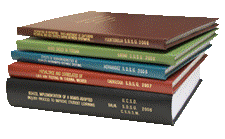Libraries, University of Nebraska-Lincoln

Archival Master’s Theses from the University of Nebraska-Lincoln
Date of this Version
12-1968
Document Type
Thesis
Citation
Thesis (M.S.)—University of Nebraska—Lincoln, 1968. Department of Agricultural Economics.
Abstract
In an ever-changing agriculture, producers are constantly faced with decisions concerning profit maximization.To remain competitive with other farmers, and even other sectors of the non-agricultural economy, the producer must make maximum use of all available technology and management skills.To do so requires current knowledge of the latest productive practices, and an adaptation of those which will improve relative income position and returns to employed resources.Under changing technology, emphasis must be placed on determination of optimum farm organization, and expanding or realigning resources in those areas of greatest returns.
The study is part of the Great Plains Research Program, in cooperation with the Farm Production Economics Division, Economic Research Service, United States Department of Agriculture.The Great Plains study area includes North Dakota, South Dakota, Kansas, Oklahoma, Texas, New Mexico and Nebraska.The objective of this study is to analyze one representative livestock farm in each of the study areas previously described, to determine the optimum combination of crop and livestock enterprises on these farms.Of particular importance is to determine what relationship wheat production has in optimum farm organization when compared to roughage and feed grain utilized in livestock enterprises.Intuitively, there might be a closer dependence on feed grain and roughage production on a livestock farm, than on a commercial crop farm which emphasizes wheat production.A further goal is to examine the changes in the livestock enterprises when varying prices of wheat are considered.The role and interaction between pasture and roughage production will be examined.If cropland has a high opportunity cost, it could be hypothesized that livestock production may be limited to the availability of pasture and other roughage, or a livestock feeding system employed to the extent of the grain produced.If cropland has a low opportunity cost, there might be more dependence on cropland in furnishing roughage with greater numbers of livestock and less dependence on pasture hay.
Advisor:Glenn A. Helmers


Comments
Copyright 1968, the author. Used by permission.